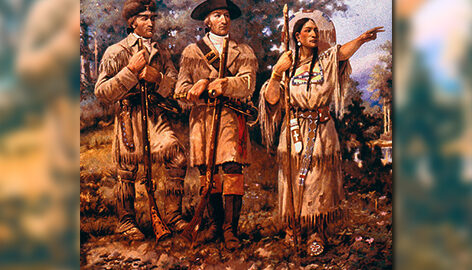

The Native American is known as American Indians. In other terms, Native Americans are the indigenous people of the United States of America. The United States of America had issued a silver dollar to commemorate Native Americans under the Native American 1 Dollar Coins Program.
The term dollar is derived from the German word ‘Thaler’ which refers to the large silver German coin. In the year 1794, this was the first silver coin made in the United States of America. Since 1794 the United States of America mints one dollar coin periodically. The United States of America issued this coin with the different versions of Liberty. The obverse side of this coin has depicts different individuals, that includes President Dwight D. Eisenhower (1971-1978), suffragist Susan B. Anthony (1979-1981, 1999), and Sacagawea in 2000.
From the year 2009, the United States of America issued coins that honour Native Americans. These Native American 1 Dollar Coins were issued to commemorate the contribution made by Native Americans in the history and development of the United States of America.
The obverse side of these coins depicts the bust of Sacagawea, a Lemhi Shoshone woman best known for serving as a member of the Lewis and Clark expedition into west America. Being the only woman in this famous excursion she helped Lewis and Clark in the establishment of new contacts with people of Native Americans.
Sacagawea’s life is surrounded by many mysteries and myths. At the age of 11; she got captured by a Hidatsa raiding party and was taken away from her Shoshone tribe and was sold into slavery with the Missouri River Mandan’s.
In November 1804, she was invited by Lewis and Clark expedition and Shoshone interpreter. After the expedition, she died at Fort Manuel in the year 1812. Today, this place is well known as Kennel in South Dakota.
The reverse side of these coins is designed to honour the important contribution made by the Native Americans to develop the cultural history of the United States of America. The reverse side is selected by the Secretary of the Treasury after consulting with the U.S. Senate Committee on Indian Affairs, the Congressional Native American Caucus of the U.S. House of Representatives, the Commission of Fine Arts, and the National Congress of American Indians, and after public review by the Citizens Coinage Advisory Committee.
2009 Native American 1 Dollar Coins
Cultural Agriculture had always been an important subject in the history of Native Americans. When European arrived in the ‘New World’ one of the largest factor which helps and benefited them is their relationship with the Native Americans. Native Americans help the European by sharing their agricultural knowledge and information. Without the support and knowledge of the Native Americans about agricultural techniques, it would have been impossible for the colonist to survive in the New World. The Native Americans practised agricultural activities like crop rotation, round cropping, hybridization, seed development, irrigation method, and many other agricultural techniques that are still used today.
Native American was skilled in agriculture; they provided the margin of survival for the early European colonists. They did this either through trade or direct sharing of expertise.
The obverse side of 2009 Native American 1 Dollar Coins depicts the bust of Sacagawea that was produced in the year 2000. The reverse side of this coin depicts Native American women planting seeds in a field of corn, beans, and squash.
2010 Native American 1 Dollar Coins
Haudenosaunee is a general term that is used to the Iroquois speaking people. The Iroquois speaking peoples include the Huron, Cherokee, Neutrals, Tuscarora, Wenro, Erie, Susquehannock, and the Five Nations Iroquois. The Five Nations Iroquois are Seneca, Cayuga, Onondaga, Oneida, and Mohawk. The French called these nations as the Iroquois, the English referred them as the Five Nations, but they called themselves as Haudenosaunee. The Haudenosaunee are well known as Hauden, meaning people of the longhouse.
The Haudenosaunee refers to the people who have extended house or people of the longhouse. The term longhouse is a metaphor; it means that the people are meant to live together as a family in the same house.
The term Haudenosaunee refers to a CONFEDERATION or ALLIANCE among six Native American nations who are more commonly known as the Iroquois Confederacy.
The confederacy is properly called the Haudenosaunee Confederacy meaning People of the longhouse. This Confederacy is also known as the Iroquois Confederacy by the French and the League of Five Nations by the English.
The United States of America had issued this commemorative one dollar with in the year 2010. The obverse of 2010 Native American 1 Dollar Coins coin depicts the central figure of ‘Sacagawea’ design first produced in 2000. The reverse of this coin depicts the image of the Hiawatha Belt with 5 arrows bound together’.
The Mintage World Team comprises of experts, researchers and writers from the field of Philately, Notaphily and Numismatics who try to shed light on some of the most interesting aspects of coins, banknotes and stamps from not just India but across the globe as well.